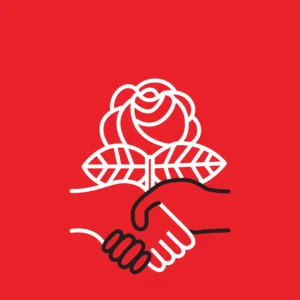
From the National Political Committee — Fighting For Working Class Freedom
Enjoy your October National Political Committee (NPC) newsletter! Our NPC is an elected 27-person body (including both YDSA Co-Chairs) which functions as the board of directors of DSA. This month, join our Fall Drive, hear about organizing across the country, and more!
And to make sure you get our newsletters in your inbox, sign up here! Each one features action alerts, upcoming events, political education, and more.
- From the National Political Committee — Fighting For Working Class Freedom
- Socialist Cash Takes Out Capitalist Trash. Help Elect Socialist Candidates!
- Saturday 10/25 Fall Drive Phonebank Kick Off — Special Guest Bhaskar Sunkara
- RSVP for International Migrant Rights Working Group ICE Watch Training Tuesday 10/28
- AfroSocialist and Socialists of Color Collective Meetings Tuesday 10/21 and Thursday 11/13
- Convention results
- Apply to Join the Democracy Commission (DemCom) 2025–2027! Deadline Extended to Friday 10/31
From the National Political Committee — Fighting For Working Class Freedom
Hot Socialist Summer has come to a close for 2025, but as the temperature drops this fall, organizing across DSA is heating up!
DSA is at a pivotal moment, where the genocide in Palestine and the failures of the Democratic Party to mount meaningful opposition to the Trump administration, the oligarchy, and the rise of the far-right is motivating tens of thousands of people to build a mass, socialist organization in the United States. According to a Gallup poll, support for socialism is at an all-time high among Democratic voters. DSA’s presence at mass actions like the No Kings protests last weekend show how many people are ready for a fighting alternative to the catastrophic status quo.
All across the country, people are being inspired to believe that building a powerful socialist party is possible — and that they can be a part of it. Just this past month, DSA has surpassed 80,000 members in good standing, our highest membership peak to date! DSA now has better organization, more political development, more vibrant internal democracy, and more radical ambitions coming to fruition than ever. We have more DSA members contesting elected office while operating together as socialist blocs, from Missoula, Montana, to Minneapolis, Minnesota, to Portland, Oregon. We are more embedded in the labor movement, we are more functionally part of social movements, we are more deeply internationalist — and thus are even better positioned to motivate and sustain a new membership surge.
We are just weeks away from Zohran Mamdani’s election for mayor of New York City — a democratic socialist mayor in the highest executive office in the heart of global capital! — and chapters across the country are throwing down for their locally and nationally-endorsed campaigns as Election Day nears (and you can, too, even if you’re not in a city with a candidate – jump on a Socialist Cash Takes Out Capitalist Trash phonebank and help push these candidates across the finish line)!
State power is just one piece of DSA’s strategy — we’re also…
- Building out our support network for Starbucks Workers United and helping chapters across the country to connect with their local SBWU organizing units as the holiday rush draws near
- Showing up in solidarity with the Cuban people, with a delegation we just sent to Havana of 40 DSA elected leaders and rank-and-file members from chapters big and small across the country to deliver hundreds of pounds of solidarity aid, learn about the achievements and challenges of Cuban socialism.
- Ramping up the pressure on Avelo Airlines as they continue to profit off mass deportations via ICE contracts, both with a consumer boycott and with pressure campaigns to kick them out of airports
- Continuing to build out resources and new fronts in our boycott against Chevron, a primary BDS target, as we continue to stand firm for Palestinian liberation
- And so much more!
As we continue the fight for working class freedom everywhere — from down the block to the other side of the globe — we know that as DSA, we must be bigger and stronger by many orders of magnitude. DSA is and will always be a dues-funded organization, where organizing new members increases our people power, allowing us to deepen and expand our base as we fight to oppose US military aggression and free Palestine, prepare for major political interventions toward midterms, organize toward May Day 2028, and so much more. DSA now has more members in good standing than ever before — and we’re turning the heat up higher with our just-launched Fall Recruitment Drive, with a stretch goal of reaching 100,000 DSA members by the end of this year!
We’re rooted in struggle, blooming in solidarity — and together we’ll keep growing democratic socialism throughout this fall. Read on for more about how you can plug into the Fall Drive — and sign up for phonebanks with special guests, to help us reconnect with lapsed members to rejoin DSA in this crucial political moment! Watch this space for more information about how you can get involved at the chapter level, or by taking on your own recruitment campaigns among your coworkers, neighbors, and friends.
For even more ways to get plugged into DSA, scroll down! We will see you in the fight!
Yours,
Megan Romer and Ashik Siddique
DSA National Co-Chairs
Socialist Cash Takes Out Capitalist Trash. Help Elect Socialist Candidates!
It’s 3 weeks till election day  and we’re 6.5k short of our goal! It’s been a hugely successful year for the DSA’s National Electoral Commission and our fundraising campaign, and we’re hoping to have a new crop of socialists in office to show for it.
and we’re 6.5k short of our goal! It’s been a hugely successful year for the DSA’s National Electoral Commission and our fundraising campaign, and we’re hoping to have a new crop of socialists in office to show for it.
But taking out the capitalist trash won’t be possible without YOUR help. Corporate money is flooding into our races across the country in this crucial final stretch. We’ve set a goal of raising $100,000 before election day to ensure our slate has the support it needs to win and we’re just a little over $5,000 short! Can you donate to our slate to support a socialist running for office?
Saturday 10/25 Fall Drive Phonebank Kick Off — Special Guest Bhaskar Sunkara
Be part of the Growth and Development Committee’s nation-wide membership drive! Our strength is rooted in solidarity and in our communities. Let’s work to build deep roots in our local communities, reach out to lapsed members to renew, and bring thousands more into the struggle together! Join us for Fall Drive phonebanks to talk with lapsed DSA members about renewing their dues. We’ll kick off Saturday 10/25 at 5pm ET/4pm CT/3pm MT/2pm PT with special guest Bhaskar Sunkara!
And you can join calls throughout November:
- Saturday 11/1 at 5pm ET/4pm CT/3pm MT/2pm PT
- Wednesday 11/5 7pm ET/6pm CT/5pm MT/4pm PT with special guest Meagan Day
- Wednesday 11/12 7pm ET/6pm CT/5pm MT/4pm PT
- Saturday 11/15 5pm ET/4pm CT/3pm MT/2pm PT
- Wednesday 11/19 7pm ET/6pm CT/5pm MT/4pm PT with special guest Adam Hochschild
- Saturday 11/22 5pm ET/4pm CT/3pm MT/2pm PT
RSVP for International Migrant Rights Working Group ICE Watch Training Tuesday 10/28
ICE agents have been escalating their presence in our communities, and that means that we need to get together with our neighbors and come up with plans to make sure we are protecting ourselves and our communities from their harassment.
People all over the country are trying different things. Many communities are coming up with ways to observe ICE and to inform neighbors of their rights, all things that every person has a right to do under the Constitution.
Join DSA’s International Migrant Rights Working Group and NDLON on Tuesday 10/28 at 8pm ET/7pm CT/6pm MT/5pm PT to hear from NDLON organizers about the Adopt a Corner program, and from DSA organizers who are actively running ICEWatch and Adopt a Corner programs in their local chapters.
AfroSocialist and Socialists of Color Collective Meetings Tuesday 10/21, Thursday 11/13
Hello comrades and cousins! Interested in joining a collective for AfroSocialists and Socialists of Color?
Join AfroSoC for for upcoming General Body Meeting (GBM) to be in community with socialists of similar identity, culture and politics. The next GBM will be Thursday 11/13 at 7pm ET/6pm CT/5pm MT/4pm PT.
If you are new to AfroSoC, we encourage you to attend our upcoming New Member Orientation tonight, Tuesday 10/21 at 7pm ET/6pm CT/5pm MT/4pm PT. Questions? Reach out to AfroSoc@dsacommittees.org.
Convention results
The 2025 Convention Results Compendium and Minutes are officially approved by the 2025-2027 National Political Committee (NPC)! You can view these results and minutes here.
We appreciate everyone’s patience as our new NPC got onboarded and settled into their roles. As a reminder, there are Overflow Agenda items from the Convention that the NPC is still working through. These can be viewed in the final compendium. We hope to take up a majority of these items during our October 19th virtual meeting as well as our November 8th and 9th NPC in-person meeting in Denver, Colorado.
We hope that all comrades who got sick following Convention are doing well. If you think you may have contracted COVID and have not already let us know, please email dsacon@dsausa.org with the subject line “Convention COVID Reporting” so we can continue to track and plan for future events. Please do not reply back to this email for this purpose.
Apply to Join the Democracy Commission (DemCom) 2025–2027! Deadline Extended to Friday 10/31
Apply to Join the Democracy Commission (DemCom) 2025–2027! The deadline to apply is Friday 10/31. Authorized in 2023, the Democracy Commission (DemCom) developed reforms to strengthen democracy across DSA. Its proposals were overwhelmingly adopted at the 2025 Convention, and the body has now been reauthorized to support chapters and the NPC in implementing them.
DemCom will assist with chapter rechartering and bylaws review (2025–2027), visit chapter meetings to support implementation, report regularly to members and the NPC, develop best practices in tandem with chapters, and promote democratic governance.
There are open seats on the Commission. Please fill out the form here to apply. The application deadline is Friday 10/31. Commissioners are expected to attend regular meetings (8PM ET, Monday evenings, plus some weekends), work with chapters to implement reforms, and report on progress and challenges.
The post From the National Political Committee — Fighting For Working Class Freedom appeared first on Democratic Socialists of America (DSA).
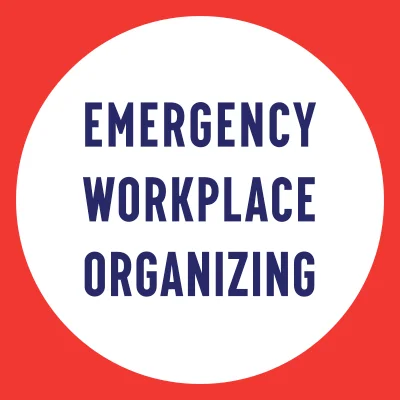

When the boss says “Unions are great, but not for us”
Ask yourself: What’s so different about your workplace? Why would your boss push back on a union?
The post When the boss says “Unions are great, but not for us” appeared first on EWOC.
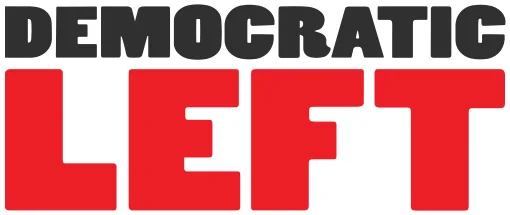

DSA Finances Demystified
A budget presentation at the organization's national convention in August clarifies the budget for members.
The post DSA Finances Demystified appeared first on Democratic Left.
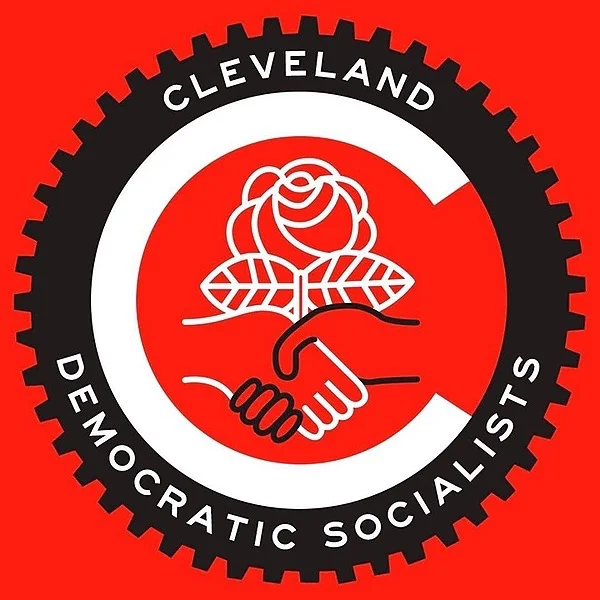

Revolutionary Optimism and Why You Should Kill the Doomer Inside You
Author: Mike Z
Things aren’t the best right now. I think we can probably all agree on that. The Trump administration is seemingly speed running the dismantling of our civil liberties while nakedly attacking any opposition of any kind. He’s declared war on anyone even remotely to the left of his positions with with broad and sweeping declarations of illegality so as to target and silence dissent within society. Even the most milquetoast liberals are being attacked and silenced for their modest criticism of Trump. Endless tariff uncertainty and corporate back dealing have led to ever increasing pinch in the wallet for the average person. ICE continues to attack our neighbors in the name of unlimited deportations. Federal troops and the national guard are being deployed en masse to ccities Trump deems to be “crime infested” to normalize their use against American citizens. Israel continues its genocide of Gaza from occupied Palestinian territory while the American media landscape consolidates control in the hands of a few Zionist sympathizers.
I think many of us did not expect things to fall so fast. That there would be at least some kind of fight or pushback that would slow things down. I think many of us thought we’d have more time to prepare for a fight that we knew may be coming, but just not yet.
We do not.
The fight against fascism is here. And with this recognition there is a sense of helplessness and hopelessness that can become paralyzing or empowering depending on your outlook. I recently helped run a new member orientation and when we talked about why we all joined, those feelings of helplessness and hopelessness were at the top of the list. For these people those feelings motivated them to seek out something more, but for so many others it leads us to shut down. Even those of us who have been in this fight for any amount of time are susceptible to this as well. What we do is not easy and we are all just human at the end of the day. It is something I have fought with on hard days as I’m sure many of you have as well, but we must be wary of letting those feelings set in and stay for any significant length of time. They can lead us to doomerism – that nihilistic feeling that nothing can change, try as we might, so what’s the point? It leads us to isolate and pull away from our comrades who are in desperate need of our support and solidarity. It leads us to comply with our ideological enemies before so much as a word is even uttered.
Do not comply in advance. Kill the part of you that dooms.
Your doomerism is the final boss of overcoming your liberalism. Liberalism teaches us to be oriented towards the individual and to hold that ability to operate unfettered from the restrictions of society and our peers as the highest virtue. It would have us believe that a single person, with enough pulling of the bootstraps, could change society. But anyone who has lived in one of our so-called liberal democracies understands the powerlessness of the individual in the face of systemic oppression. I believe this is where that doom comes from. But as socialists the remedy is simple. It is the knowledge that throughout history it has always been the case that true change only happens when the average person bands together in a fight for a vision of a future that has yet to be. A future that WILL be if we do the work now to materialize it.
We must remain endlessly hopeful that these actions we are taking right now will be the ones that start the fall of the first domino. We must remain steadfast in the face of overwhelming power and adversity to keep fighting for what we know to be right and just. We must remain assured in our convictions that the emancipation of all people from the evils of capitalism is worth fighting for to see a better future for our descendants who will reap what we sow today. And this is not to say it will be easy, because it certainly will not be, but remember that by joining with our comrades we can help each other foster and maintain the spirit of unyielding optimism that our fight requires. The future we want to build must remain our lodestar to bind us together in a movement larger than any one of us single actors.
In writing this I am constantly thinking of the Palestinian people, as I do most days for the past 2 years of the ongoing genocide in Gaza. Every day there are new atrocities to learn about. Every day more innocent lives are lost in the name of genocidal irredentist conquest. But every day I am also stunned by the stories of ongoing resilience by those who remain and continue to fight for their very existence. They would have every right to despair. Nearly 80 years of occupation and systematic ethnic cleansing by Zionist forces, the majority of it patently unknown to much of the western world funding their destruction, and yet they carry on. They continue to fight for their homeland and their humanity with such grace and compassion. They remain unbroken.
Just as they dream of a world where they can live free in their land once more, we can embody this endless optimism in our fight to transform the world. We can work to build a world that will ensure that the oppressed and marginalized peoples around the world may never suffer a fate even remotely similar to those of Palestine, or Sudan, or Sri Lanka, or any of the other communities across the globe being persecuted ever again. For the sake of all people we must steel ourselves so we may respond to their cries for help both at home and abroad.
I recently finished a wonderful book, “Let This Radicalize You” by Kelly Hayes and Mariame Kaba Cover to cover it was an amazing read that I highly recommend to any organizers looking for salient real world stories of other organizers and how they’ve struggled and succeeded. But that’s not what I want to talk about. During the book Mariame quotes one of her previous works and it has become permanently emblazoned into my mind –
“Let this radicalize you rather than lead you to despair.”
And that’s really the whole thing right there to me. To me this quote really encapsulates the concept of Revolutionary Optimism in its entirety. When faced with heinous societal developments, don’t let it silence you, let it be the fuel that powers your resistance. Be it hope, anger or anything in between. And if you can’t do that, do it out of spite.
Remember that the average person does not like what is going on. They don’t like Trump and all the violence he is fomenting. They don’t like the attacks on their neighbors. They don’t like everything becoming endlessly more expensive while becoming worse every year. They don’t like the threats and restrictions on their freedoms across the board.
Remember that people want clean air and safe food. They want universal healthcare. They want affordable childcare. They want high quality infrastructure and public transit systems. They want affordable public housing. They want to feel safe with their family when they are out in the world. People want peace and prosperity, not war and destruction.
The average person is feeling all the same emotions of helplessness that we are – it’s our responsibility to help them. As those on the forefront of this struggle it is our duty to share our knowledge and strategies with the masses. To organize them and bring them into the fold of our fight. To show them a better future is possible and that they are a vital part of the equation that will free us all.
Organizing is the antidote to the despair we are all collectively feeling and working to stave off every day. In my short time in DSA I have found that surrounding myself with my comrades working together, no matter how small that work may be, has been the surest path to feeling secure in what we are doing. It’s helped me feel a little less alone in such uncertain times. It’s helped me feel reassured in the mission we are all here to fight for and the world that DSA believes in. I hope it can be that for you as well.
Kill the doomer inside you. A better world is possible for us all – let’s build it together.
Join DSA
If you’ve read this far I want to reward you with some of my current favorite videos that help me maintain my optimism for the future by reminding me why we fight. They help me lock back in. Yes, 3 of them are from Andor – don’t give me that look. Light spoilers if you haven’t seen it (go watch it).
https://www.youtube.com/watch?v=-asb8zTiuZ4
https://www.youtube.com/watch?v=TKB67KzjO4A
https://www.youtube.com/watch?v=TaKrm5txGCQ
And finally an excerpt from one Michael Parenti’s many wonderful lectures
https://youtu.be/npkeecCErQc?si=0o_HW2fb4jdUY-I4
The post Revolutionary Optimism and Why You Should Kill the Doomer Inside You appeared first on Democratic Socialists of America.


Biometrics: A Backdoor for Cops. Here’s How to Lock It


Italian workers packed the streets for Palestine
Workers in Italy have been extremely successful in using the strike as a tool against war and connecting this with their lives at work.
The post Italian workers packed the streets for Palestine appeared first on EWOC.
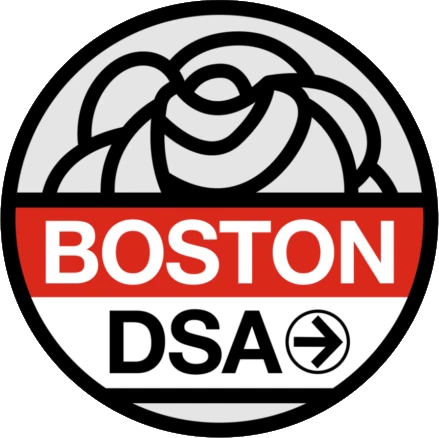

MIT Refuses to Sign Trump Compact Following Pressure from Grad Workers’ Union and Other Groups
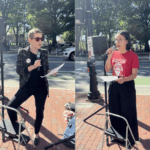
[[{“value”:”

By: Frederick Reiber
CAMBRIDGE, MA – Massachusetts Institute of Technology (MIT)’s students, workers, and union comrades gathered outside of the university’s Lobby 7 on Friday, October 10th to protest and celebrate MIT rejecting the Trump administration’s compact.
Earlier this month, the White House sent offers to nine universities in what the administration titled “Compact for Academic Excellence in Higher Education.” Contained within these agreements were a number of stipulations—including commitments to accept the government’s priorities on admissions, women’s sports, free speech, student discipline and college affordability—exchanged for better access to federal research funding.
Following calls from the graduate worker union, professors, and numerous other student-led groups, MIT president Sally Kornbluth rejected the compact. She cited the numerous messages she had received asking for the compact’s rejection. In doing so the university becomes the first to reject the president’s proposal and the only such university at the time of writing.
Trump’s Continued Attacks on Higher Education
Trump’s proposal follows numerous attacks and challenges to higher education. The administration has paused federal funding of many top research universities, signed several executive orders targeting colleges, and attacked international students’ rights. These have emptied out entire neighborhoods in areas like Allston-Brighton as international student enrollment dropped precipitously this semester, and while the compact may be seen as an attempt to change course, academic leaders were quick to point out its true intent. Ariel White, vice president of the American Association of University Professors (AAUP) at MIT, said:
This wasn’t an invitation letter, it was a ransom note… the goal is to leave universities powerless and at the whim of the federal government.
Other academic leaders agreed. MIT Graduate Student Union (GSU) – UE 256 president Lauren Chua called the proposal “a thinly veiled attempt to divide us, to make us turn against each other, and to weaken the very communities that make our university thrive.”
Chua couldn’t be more right, as the compact seeks to enforce harmful gender definitions, denying transgender students recognition and rolling back university protections, all masked under the language of “equality.” Other stipulations include forcing universities to be more accepting of conservative lines of thought, potentially overruling scientific consensus in academic research. The compact also bans colleges from using sex, ethnicity, gender, or political orientations, continuing the overturning of decades of academic work that finds strong connections between affirmative-action like policies and increasing opportunity for those with less money, or those who continue to face systemic racism. As Jade Personna, the speaker for the MIT Black Student Union, argued: “the battle is decades old and the Black Student Union has been fighting it since our inception.”
U.S. conservatives will continue their attacks on academic and intellectual freedom. That is part of a larger ideological project only furthered by the practical program of Project 2025. Long seen as bastions of “deceit and lies,” higher education has long been seen by conservatives as a threat. Some claim that colleges “teach that America is an evil, racist nation” purely for harboring left-wing scholars,. Now-Vice President JD Vance summarized their perception back in 2021: “the universities are the enemy.”
In reality, American colleges reflect and reproduce America’s troubled history. Universities are learning institutions that are also landlords, schools that are also workplaces.
Recognizing People Power
One important takeaway from the academic and student rally was the need for people power. Despite what other headlines may imply, the university’s rejection of the Trump Compact was not simply a matter of a good executive. The university’s rejection was a coordinated and community-led effort, won by the numerous student, worker, and professor-lead groups that organized against the compact by applying pressure on an executive amenable to that pressure.
The unfortunate reality is that American universities are businesses. Run by boards of trustees, colleges will do little to protect their students’ rights to academic or intellectual freedom in the face of financial turmoil. We have seen this time after time with pro-Palestine protests, and will likely continue to see similar protests dispelled.
Kornbluth was forced to reject the compact by the very people who make MIT the institution of MIT. It is the professors, workers, and students who stood up for their communities, risking their bodies against an administration unafraid to kidnap or coerce. As Chua stated in her speech:
This is a victory for every single one of us, because we acted with unity and urgency, [because] we mounted a pressure that could not be ignored.
Fighting against fascism is not easy, it is not pretty, and it certainly is not done by CEOs, academic presidents, or a board of trustees. It is done through the blood, sweat, and organizing of workers, who—much like the community leaders at MIT—make themselves heard.
Frederick Reiber is a PhD student at Boston University researching collective action and technology. He is a member of SEIU 509, Boston DSA, and covers tech, labor, and education for Working Mass.
The post MIT Refuses to Sign Trump Compact Following Pressure from Grad Workers’ Union and Other Groups appeared first on Working Mass.
“}]]


DSA’s Success: Lakewood Passes First-of-its-Kind “Gender Freedom Policy”
From the beginning, the Trans Liberation Priority Project has put on its agenda passing trans sanctuary city legislation in the cities of Lakewood and Cleveland.
Lakewood is our first success.
The Cleveland DSA Chapter first submitted draft legislation to the City of Lakewood in April 2025 and showed up in support of this at a city council meeting, with numerous DSA members who resided in Lakewood giving testimony. Afterwards, representatives from DSA kept in touch with Council President Sarah Kepple about this for several months. In addition, we attended several events in Lakewood and canvassed, gathering resident signatures in support of the legislation.
The City, after consulting with leading local and state LGBTQ rights organizations, transformed our original draft into a Gender Freedom Policy which enshrines and upholds transgender rights in Lakewood. Sarah joined a DSA call in September and discussed the policy further. The legislation was formally brought to the floor of council in September and passed on October 6th, 2025—and we gained an earned media opportunity by being featured in an article in Ohio queer news publication The Buckeye Flame!
What does this show? Our efforts work. There is strength in numbers. Public support can sway minds. There is an appetite to protect our most vulnerable populations in Ohio, despite what legislation our state and federal governments pass. Persistent, polite communication and pressure works with local politicians. Blue cities can be beacons of hope, even in red states.
Our goal is to emulate this in the City of Cleveland. Through concentrated, democratic efforts with local partners and politicians, we aim to encourage Cleveland to pass similar legislation. The fight for another victory is only just beginning, and we are ready for it!
The post DSA’s Success: Lakewood Passes First-of-its-Kind “Gender Freedom Policy” appeared first on Democratic Socialists of America.
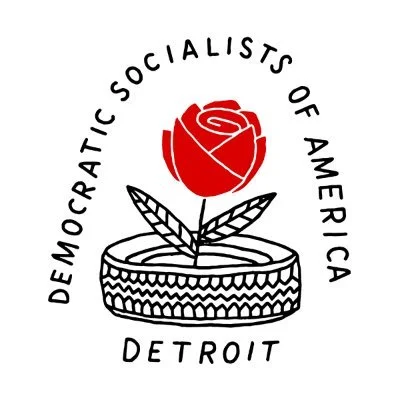

The U.S. Playbook: How The Mexican Repatriation of the 1930s Mirrors Our Current Moment
By: Taina Santiago
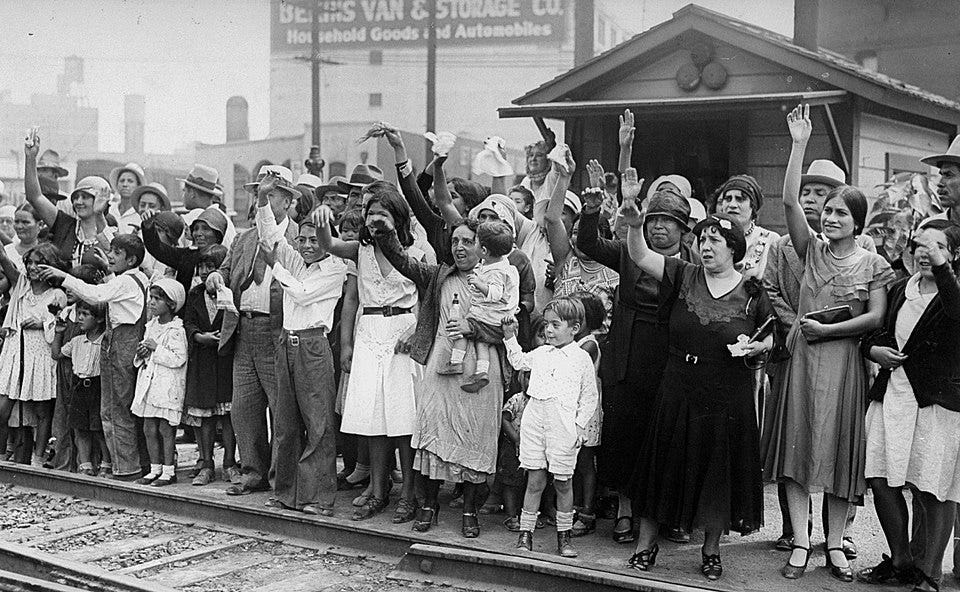
The Immigration and Customs Enforcement agency (ICE) has deported more than 400,000 people since Donald Trump took office again in January of this year. The administration recently allocated 75 billion dollars of funding to bolster the agency, which was originally formed in 2002 under George W. Bush and has been utilized by every administration since to target immigrant communities.
With ICE’s accelerated kidnapping and deportation operations, the Supreme Court legalizing racial profiling of Latine people, and the building of the shuttered-then-reopened concentration camp that the right disgustingly dubbed “Alligator Alcatraz”, many have compared this current era of attacks — specifically against Mexican immigrants — to the rise of fascism in Germany and the Nazis’ early antisemitic targeting of Jewish people in the 1930s. And while these comparisons are valid, we can also look in our own front lawn to see history repeating itself. The Mexican Repatriation of the 1930s — a period of time where as many as 2 million people of Mexican ancestry were forcibly or coercively sent to Mexico — took place on U.S. soil in the exact same period of rising fascism in Germany, but has gone largely unacknowledged since.
In the 1930s, The Great Depression brought on unprecedented levels of poverty and unemployment in the U.S. and around the world, a catastrophic downturn that was used by the government to scapegoat people of Mexican ancestry as the cause of these economic issues. President Hoover and his administration pushed an anti-immigration campaign at the time that revolved around keeping “American jobs for real Americans,” a dog whistle that quietly communicated that American meant — and still means — white.
In a white supremacist nation like the U.S., instead of the state of the economy being used as a mobilizing force for the working class, it is used — very effectively — to turn white working class people against Black and Brown people. Any time there is a recession or depression, minorities are to blame rather than the rich people who gamble with our livelihoods and abuse workers. Today, that economic rhetoric has been replaced by another set of lies that fearmonger about undocumented people committing more crimes — a claim that has been proven false. But it is all the same message of dehumanizing minorities in order to maintain white supremacy.
Back in the early 20th century, instead of ICE, it was the Immigration and Naturalization Service (INS) doing the deportations of 82,000 Mexican people between 1929 and 1935. But there were also many state and local “repatriation programs”–supported by the federal government–that encouraged people of Mexican ancestry to leave their homes, businesses, and communities for jobs, food stipends and financial assistance that did not materialize as promised, with cities like Detroit and Los Angeles carting off train cars full of people who were just living their lives. According to Professor Ana Raquel Minian in their contribution to this TIME article, “60% are believed to have been American citizens — most of them children.” This is a shocking statistic until you begin to understand that the very purpose of these “anti-immigration” efforts are nothing more than a tool to rid the U.S. of Black and Brown people, undocumented and documented alike.
Just as it is today, terror was used in the 1930s as a tool of coercion, with racial profiling and raids making life difficult for all people of Mexican ancestry. The USCIS website itself admits that, “though the effort was not aimed expressly at Mexican [people] it affected them more than other nationalities. For example, in 1930 Mexican [people] accounted for over half of all deportations.” It affected them more because they were people of color, othered by the U.S. government.
That othering continues today, where you can see on ICE and other immigration websites that every instance of the word “non-citizen” has been changed back to “alien” since Trump took office again. As it pertains to raids, the website also states that, “[a] more important result of [INS] raids, however, was that the threat of increased federal deportations likely hastened the departure of thousands of Mexican [people].” ICE’s sweeping raids of immigrant communities is creating this same fear in people around the country, and that is by design.
Detroit had its own Mexican Repatriation program that was advertised by the local government and Diego Rivera himself–the artist who painted the famed Detroit Industry murals at the DIA. He was recruited by the governor at the time, Wilber Brucker, and the Detroit Mexican Consulate, to help convince people of Mexican descent to leave Michigan. He falsely believed they would be greeted by new worker cooperatives, so he saw it as a liberating opportunity for his people and country. However, as he later came to find out, he was sold a bill of goods.
Detroit’s Mexican Repatriation program reduced the city’s population of Mexican people by 90% by 1936. And because of this pervasive, years-long ethnic cleansing, generations of Mexican-Americans were traumatized into silence, often opting for assimilation to survive. Only recently have we been able to hear the oral histories of Mexican-American Detroiters through projects like Maria Cotera and Elena Herrada’s documentary, Los Repatriados: Exiles from the Promised Land (2001), which asked elders who experienced the repatriation to recount their experiences of loss and suffering.
I was inspired to write this article because of a PBS documentary (you can watch it here) that happened to be playing on TV one night, which featured John Leguizamo documenting the history and activism of Latine people in America. In it, he talked about this repatriation operation, something I had never heard of in my life. I sat on the couch, confused. Confused about how I was unaware of this decade-long event that has shaped immigration policy and rhetoric ever since, and confused about why more parallels were not being drawn between it and the current times. The answer was that we simply hadn’t been taught about it en masse.
An essential feature of the propagation of U.S. imperialism is to erase history and frame ourselves as “the good guys”. We are taught in school and the media that most egregious human rights violations happen elsewhere, not here. Black and Brown people have always known this to be a blatant perversion of the truth — even if some of the specific examples like the Mexican Repatriation are also hidden from us. But it is a lie that white America falls for time and time again, even while they witness historically marginalized people suffer around them.
This present moment — the fascism, the racial targeting, and the white supremacy leading it all — was happening in the U.S. in the 1930s. So it is not solely Germany’s history we are repeating, but also our own. In fact, people of color have been living under fascism in the U.S. since the inception of this country, but it is only now that white America is waking up to this reality. It is time for the U.S. to look its ugly history in the face and finally–for the sake of the lives of Black and Brown people–learn from both the world’s and this country’s atrocities.
If you are looking for more ways to help in the struggle against ICE in our neighborhoods, join Detroit’s People’s Assembly contingent this Saturday, October 18th, 3PM at Roosevelt Park for the No Kings Rally taking place to connect with community members with the same resistance goals as you. Stay strong. Stay safe. We can only do this together. Solidarity forever!
The U.S. Playbook: How The Mexican Repatriation of the 1930s Mirrors Our Current Moment was originally published in The Detroit Socialist on Medium, where people are continuing the conversation by highlighting and responding to this story.


Do unions protect bad employees?
No — but just-cause rules protect unionized workers from unfair firing and discipline.
The post Do unions protect bad employees? appeared first on EWOC.